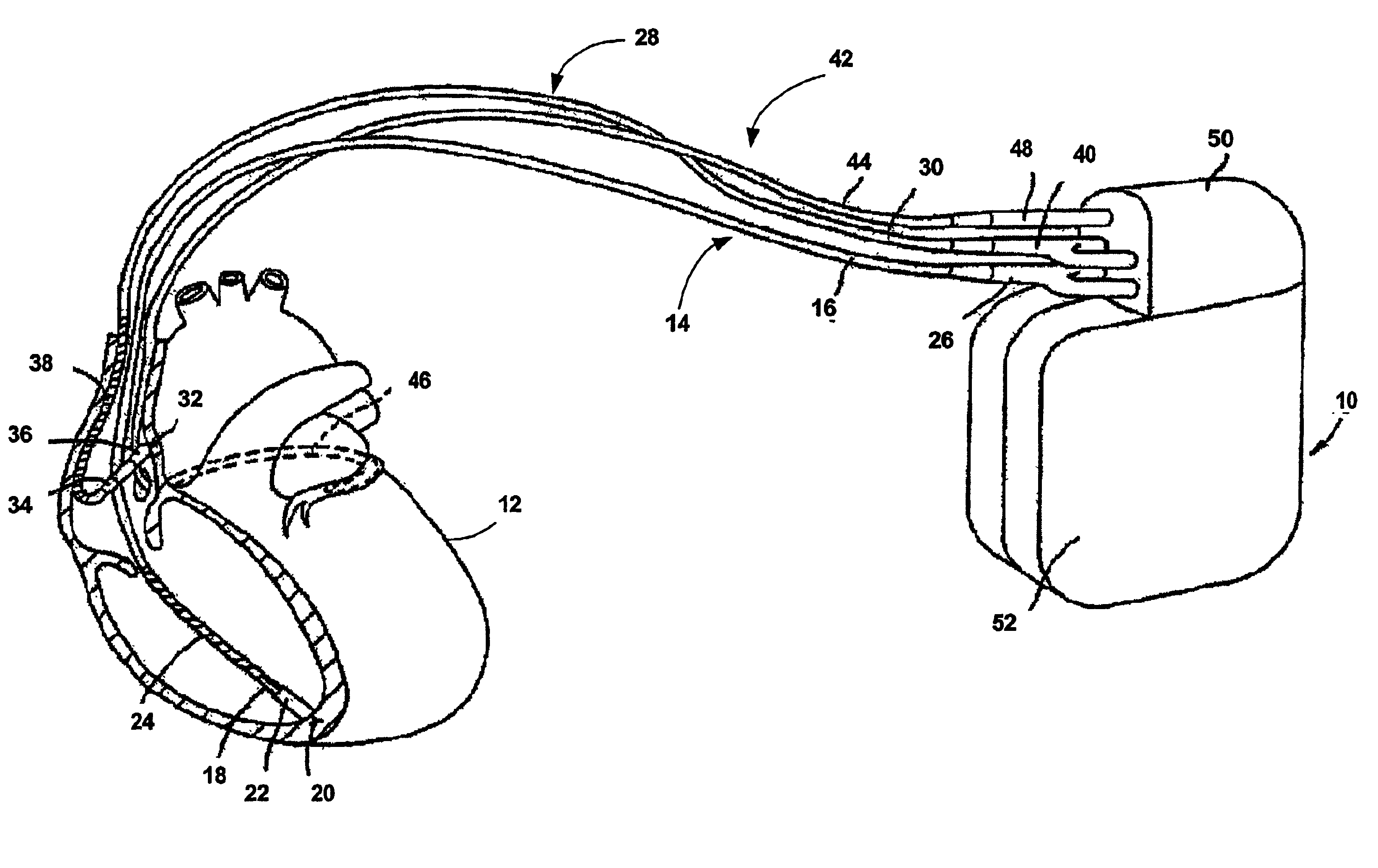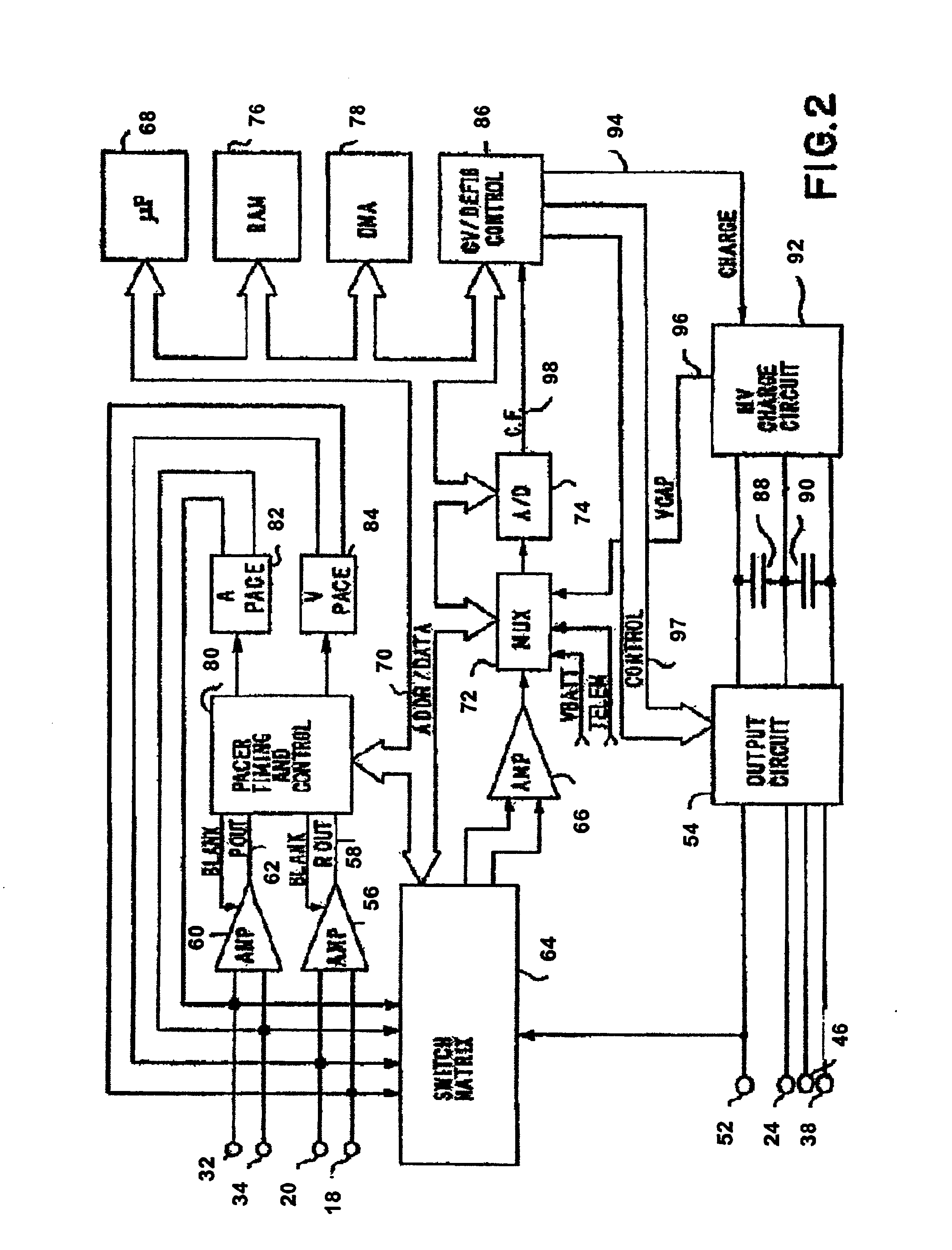Automated reapplication of atrial pacing therapies
a technology of atrial tachyarrhythmia and automatic reapplication, which is applied in the field of cardiac pacing systems, can solve the problems of ineffective atrial burst therapy, and achieve the effects of reducing the burden of atrial tachyarrhythmia, reducing the necessity of painful shocks, and increasing the efficacy of at episodes
- Summary
- Abstract
- Description
- Claims
- Application Information
AI Technical Summary
Benefits of technology
Problems solved by technology
Method used
Image
Examples
Embodiment Construction
FIG. 1 is a diagram illustrating an implanted medical device 10 useful in delivering anti-tachycardia pacing therapies. Device 10, shown in conjunction with a human heart 12, may be configured to deliver atrial pacing therapy as well as defibrillation shocks. As will be described, implanted medical device 10 can be configured to automatically reapply ATP therapies for different heart rhythms during an AT episode. The specific structure of device 10 is described below for purposes of example, and should not be considered limiting of the invention as broadly embodied herein.
As shown in FIG. 1, device 10 may include a ventricular lead 14 having an elongated insulative lead body 16, carrying three concentric coiled conductors, separated from one another by tabular insulative sheaths. Located adjacent the distal end of ventricular lead 14 are a ring electrode 18, an extendable helix electrode 20, mounted retractably within an insulative electrode head 22 and an elongated coil electrode 2...
PUM
 Login to View More
Login to View More Abstract
Description
Claims
Application Information
 Login to View More
Login to View More - R&D
- Intellectual Property
- Life Sciences
- Materials
- Tech Scout
- Unparalleled Data Quality
- Higher Quality Content
- 60% Fewer Hallucinations
Browse by: Latest US Patents, China's latest patents, Technical Efficacy Thesaurus, Application Domain, Technology Topic, Popular Technical Reports.
© 2025 PatSnap. All rights reserved.Legal|Privacy policy|Modern Slavery Act Transparency Statement|Sitemap|About US| Contact US: help@patsnap.com



